Pour Over Coffee (Chemex Tutorial)
10/9/2021
This post may contain affiliate links. Please read our disclosure policy.
Pour over coffee is hands down the best kind of morning jo. Learn how to use your Chemex in this pour over coffee recipe tutorial.
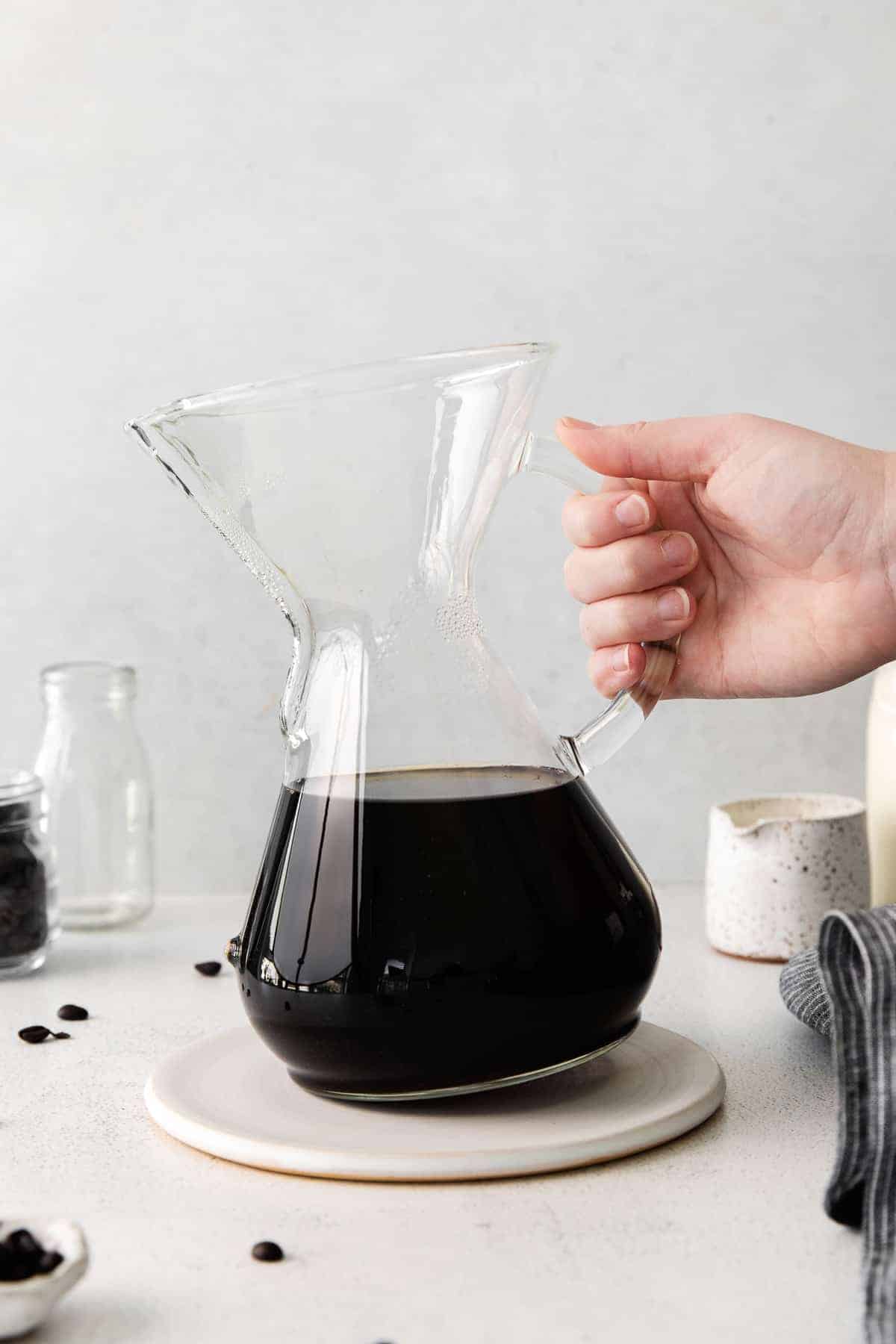
If you’re anything like us, you like a big cup (or two) of strong coffee in the morning. There are lots of different brewing methods for coffee, but pour over is our go-to.
Pour over coffee is truly the best way to get the perfect cup of coffee and today we’re excited to share our go-to pour over coffee tutorial with you.
What is pour over coffee?
Pour over coffee is a method of making coffee using coarsely ground coffee beans, a filter, and a carafe.
Why pour over coffee is the best coffee
We truly think that pour over coffee is the best coffee brewing method and it’s because of the precision. Both the beans and water are measured on a scale to give you the most perfect coffee outcome. The taste is always 5-stars!
So, you can alter the strength of your coffee by changing the coffee bean to water ratio. More deets on this below.
Tools needed for Pour Over Coffee
Pour over coffee maker: there are many different brands and sized pour over coffee makers on the market. The most popular pour over coffee maker is the Chemex, which is what we used for this tutorial.
Filter: make sure you have a coffee filter handy before starting your morning cup of pour over. You can either use paper filters or a re-usable filter like the one we have. Both work and are great options.
Electric kettle: the best way to get the most precise water temperature, is to use an electric kettle that allows you to set the temperature. If you don’t have this technology, you can always boil your water on the stove and let it sit for 5 minutes. We love the Fellow Electric Kettle.
Coffee beans: using high-quality coffee beans is extremely important for pour over coffee. Many people prefer single-origin coffee beans.
Food scale: In order to follow this pour over coffee recipe, you’ll need to use a food scale to measure the coffee beans and water. We use the Taylor Glass Top Food Scale. It’s from Target and less than $20!
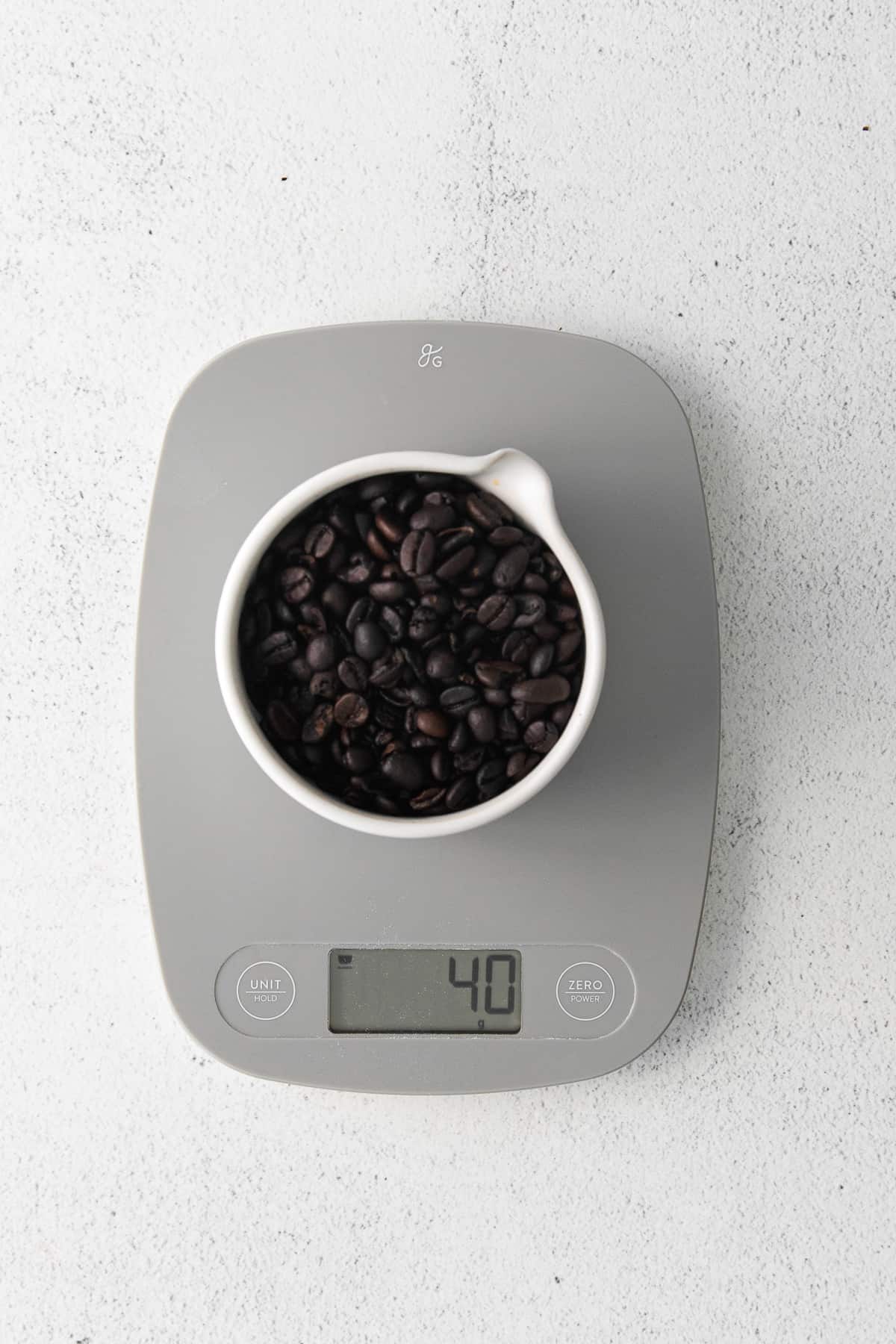
Best Pour Over Coffee Brewers
When it comes to the different pour overs, we are Chemex people. It’s a tried and true coffee device that works every time.
Chemex has many variations of their signature pour over coffee maker. The one used in these photos is the 8-Cup Chemex with Glass Handle.
What’s the difference between a Chemex and a pour over coffee?
A Chemex is a type of pour over coffee maker. So there really is no difference.
Other Pour Over Coffee Makers
- Bodum Pour Over Coffee Maker
- Grosche Amsterdamn Pour Over Coffee Maker
- Cosori Pour Over Coffee Maker
- Hario Pour Over Coffee Maker
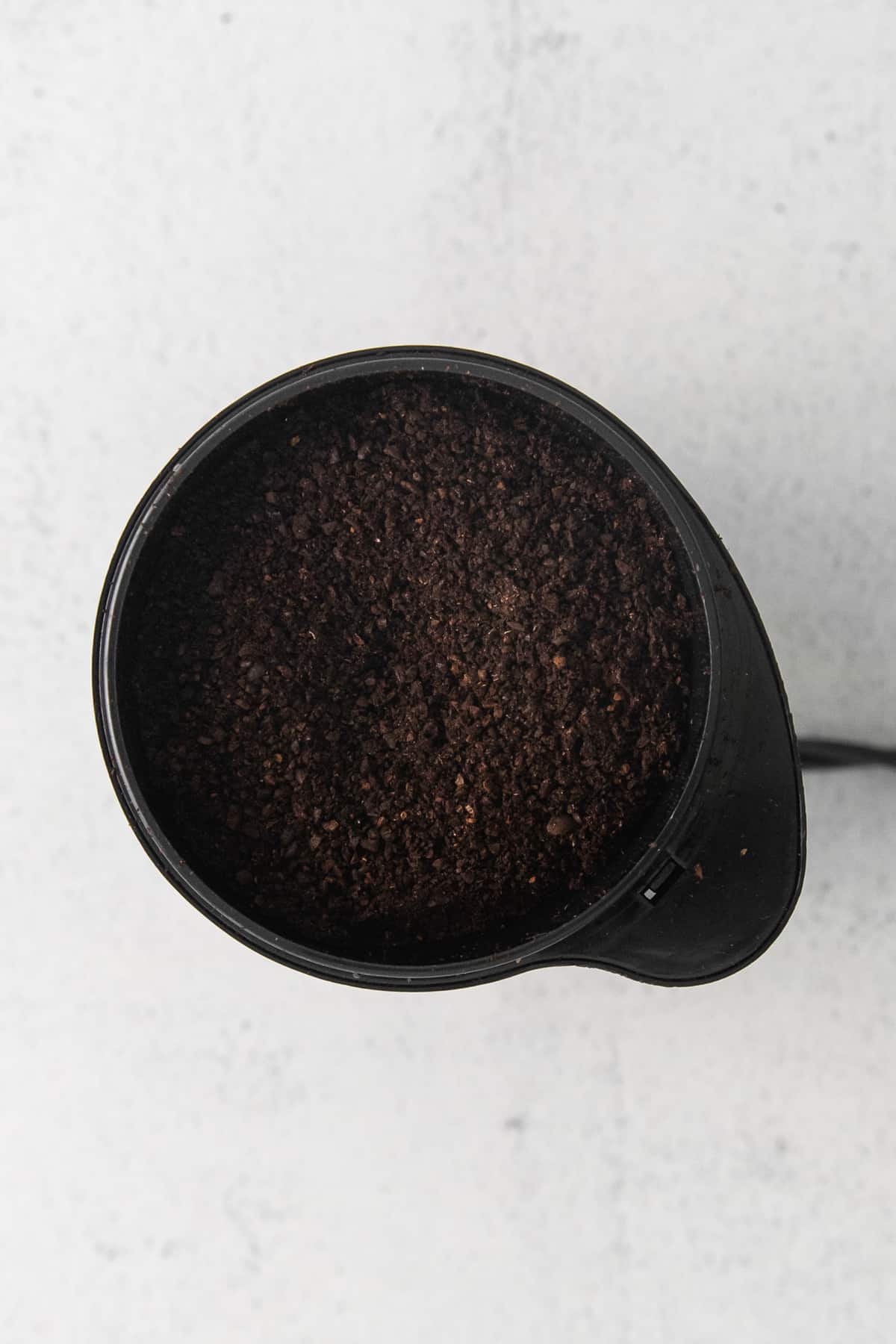
Best Beans for Pour Over Coffee
To get the best flavor out of your pour over, I recommend using good-quality single-origin coffee.
If you have a blend of coffee beans, no fear, it will still work it just might not be as fragrant.
Our Top Picks
Below we are sharing our favorite local (Minneapolis, MN) coffee beans to use in our Chemex are:
- Peace Coffee Columbia Single Origin Medium Roast
- Dogwood Etheopia Single Origin
- Roots Etheopian Single Origin
Which coffee bean roast is the most bitter?
Light roast coffee is typically less bitter than dark roast. Bitterness has to do with how long the coffee bean is roasted. The longer it’s roasted, the more bitter it will be.
Pour Over coffee ratio
Below is the coffee to water ratio for pour over coffee. I wanted to make a note that the ratio we use in the recipe card below is for strong coffee. There is truly nothing worse than weak coffee.
- Weak(er): 1g coffee beans to 17ml water
- Medium: 1g coffee beans to 16ml water
- Strong: 1g coffee beans to 15ml water (how we drink ours!)
So, if you’re like us and like strong coffee, the magic ratio is 1:15 for a perfect cup of coffee!
Note: always make sure to measure the weight of the coffee beans, not coffee grounds to get the most accurate measurement.
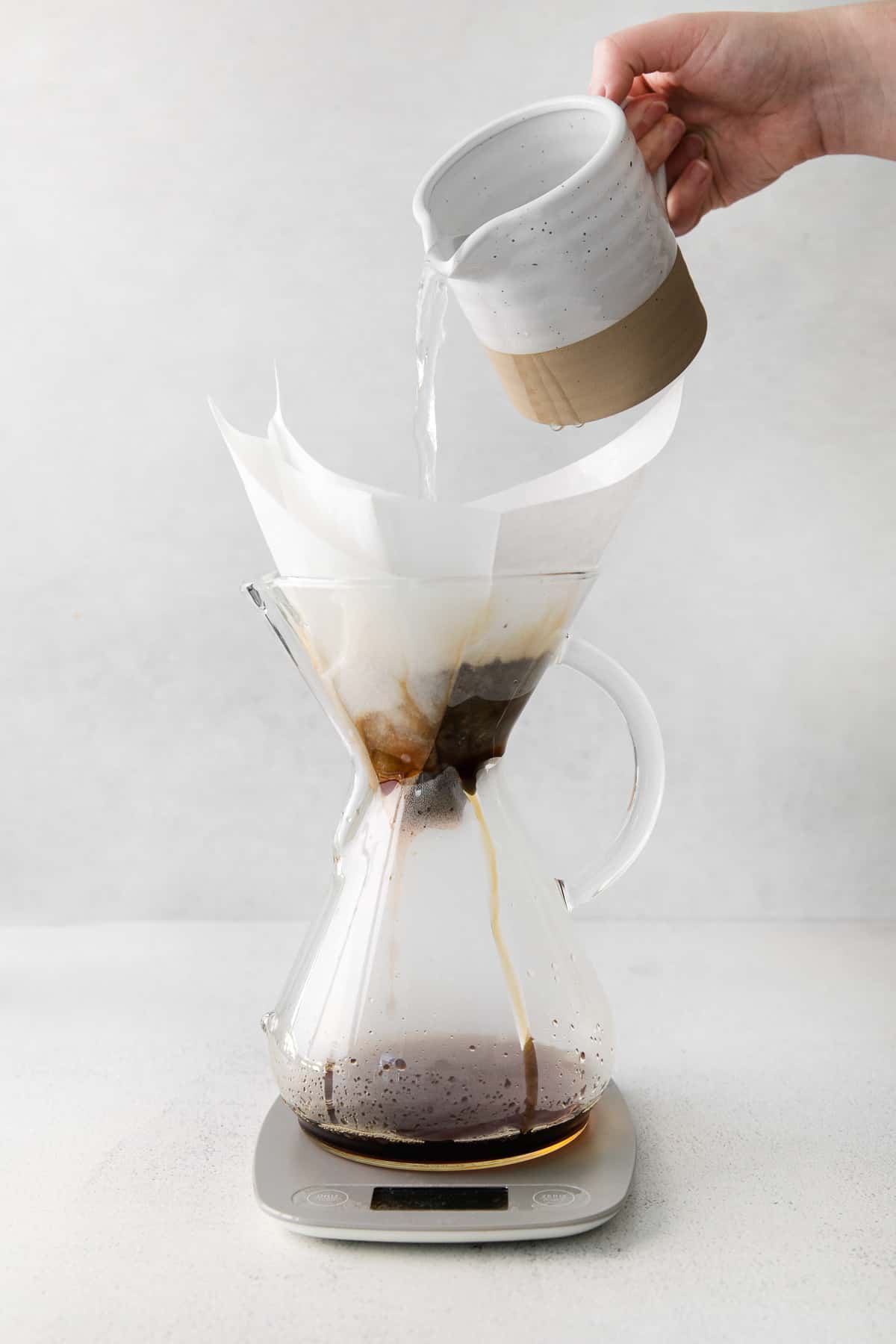
Quick Instructions
Remember to scroll all the way down to the recipe card for the most thorough tutorial on how to make pour over coffee.
- Heat Water to 200ºF: using an electric kettle, heat your filtered water to around 200ºF.
- Measure Beans: place a bowl or your coffee grinder on top of a food scale. Zero it out. Add whole coffee beans to the container until the scale reaches 40g.
- Grind Beans: grind your beans to a mediun-coarse, making sure not to grind them too finely.
- Wet Filter: once your water is 200ºF, place a paper filter into your Chemex. Wet the bottom of it, making sure to get all sides. Then, discard the water from the bottom of your Chemex.
- Add Ground Coffee: add the coffe grounds to the filter and place the Chemex onto the food scale. Zero it out.
- Bloom Coffee Grounds: Then, in a spiral motion, pour in around 75ml hot water. Make sure to cover all of the coffee grounds with the hot water. Let sit for 1 minutes in order to let the coffee grounds bloom.
- Pour Water: continue to pour hot water in a spiral motion over the coffee grounds. As the coffee drips, add more water. Repeat until all 600ml water have been used.
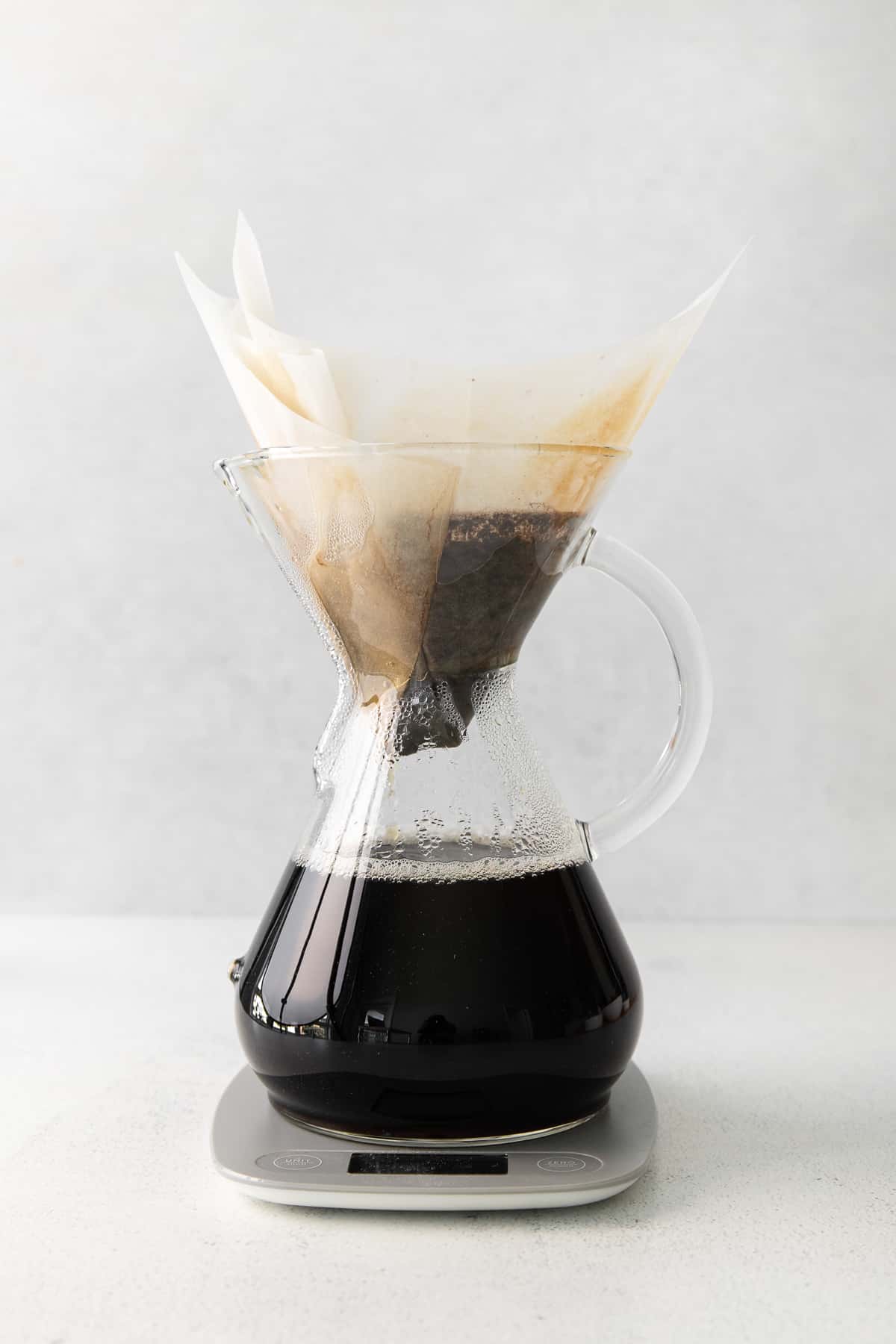
Tips and Tricks
Coffee not strong enough?
If your coffee is not strong enough, try grinding the coffee finer or packing it slightly more with the filter.
Coffee too strong?
If your coffee is too strong, grind the coffee more coarsely or reduce the amount of coffee 16g or 17g water per gram of coffee beans.
Make sure the water isn’t too hot
Your water can be heated anywhere from 1950ºF to 205ºF. If you boil your water, make sure to let it cool for a few minutes before pouring over the coffee.
Let the coffee grounds bloom
Blooming your coffee grounds refers to pouring hot water on top of your coffee grounds in order to promote the release of Co2. As the Co2 releases, the coffee grounds expand.
Fellow has a really great article on why you should let your coffee bloom.
What is better a paper filter or re-usable?
It’s all about preference. The benefit of a reusable filter is that there is no waste, but you can also buy compostable paper filters.
We’ve used both and enjoy both ways.
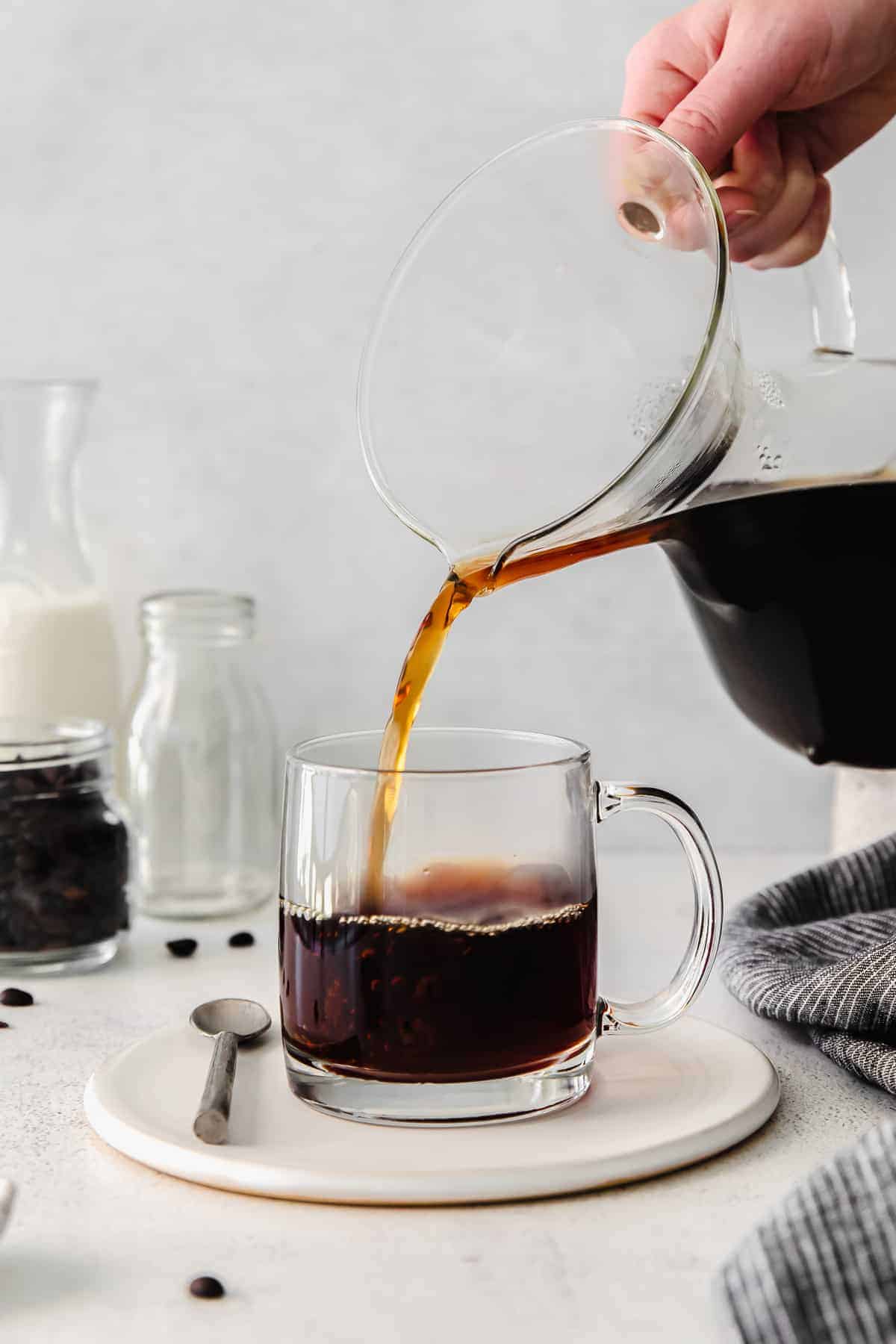
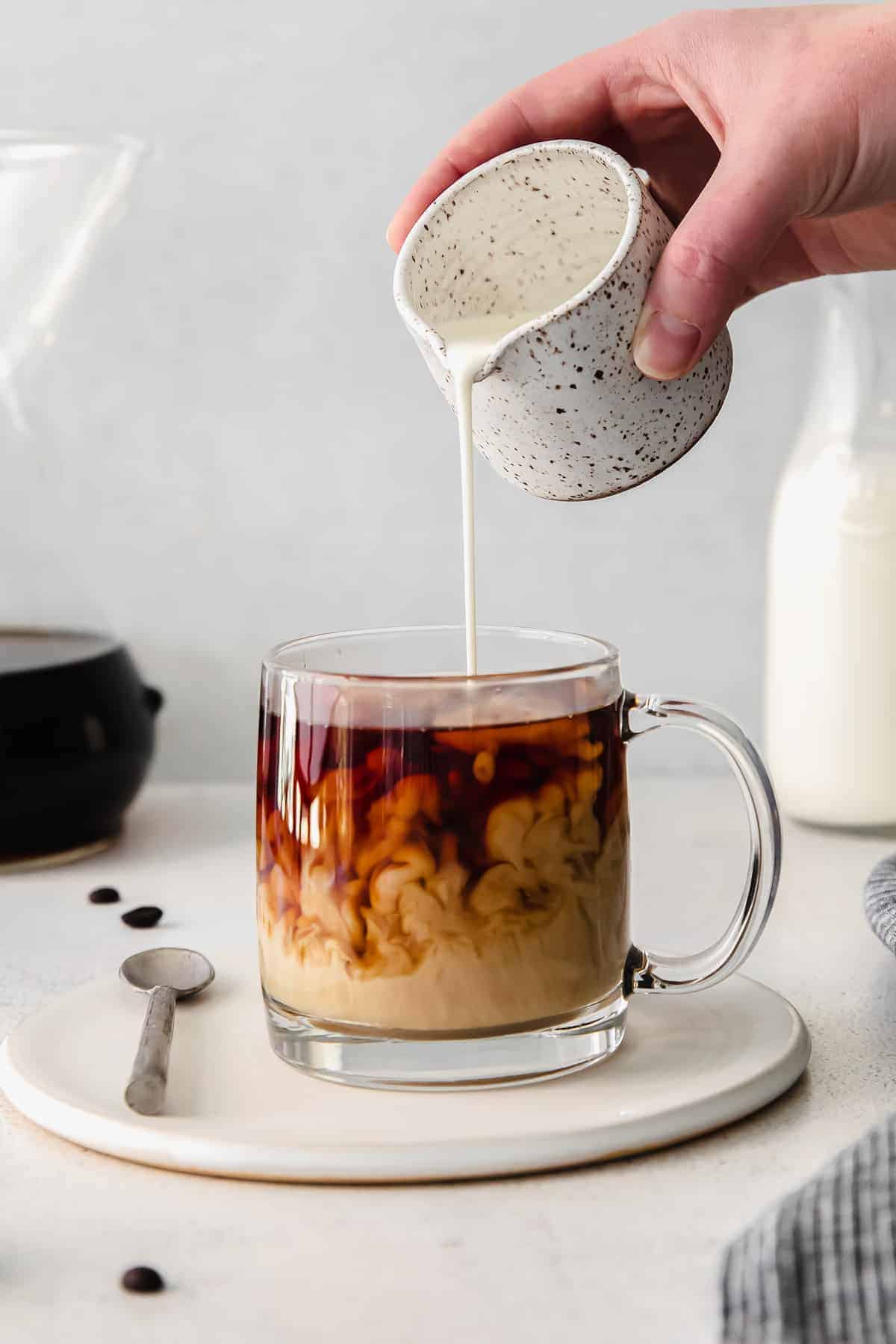
How to Make Pour Over Coffee (Chemex Tutorial)
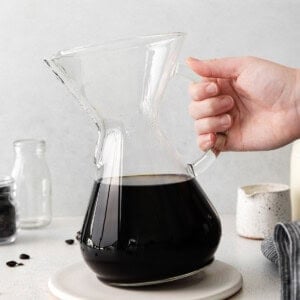
Ingredients
- 40 grams coffee beans
- 600 mL filtered water, +50ml to wet the filter
Instructions
- Measure beans: First, use a food scale to measure your coffee beans. Place a container or your coffee grinder on the scale, then zero it out. Measure 40 grams coffee beans.
- Grind beans: Transfer your coffee beans in a grinder and pulse until they are a medium grind– similar to the texture of panko breadcrumbs.
- Heat water: Using an electric kettle, heat your water to 200ºF, or just before it begins to boil.
- Wet the filter: place a filter into your Chemex or pour over and place the pour over on a scale. zero the scale and pour 50 mL of water into the filter, making sure to wet it evenly on all sides. Discard the water in the bottom of your pour over, making sure to leave the filter as it is.
- Add the coffee grounds to the filter: you don’t want to pack them tightly but you do want a smooth and even layer across the top.
- Bloom the coffee grounds: Zero the scale again and pour 75 mL of water over the coffee grounds, making sure to pour in a spiral direction so water covers all of the grounds evenly. Allow the pour over to sit for one minute to bloom.
- Pour remaining water: Slowly pour the remaining water into the pour over. Make sure to pour the water in a spiral motion again to ensure that all of the grounds are wet evenly. Pouring the water should take about three minutes, which means you should be pouring 30 ML of water every 10 seconds. The brewing process should take around 5-10 minutes.
- Once you’ve added all of the water, allow the pour over to sit for an additional minute to drain the additional water.
- Remove the filter and enjoy!
Tips & Notes
- If your scale does not measure in mL, you can simply measure in grams. Water converts 1:1 from mL to grams. So, 600 mL of water is the same thing as 600 grams of water.
- The total brew time should be around 5-10 minutes. If your brew time takes too long, consider using a coarser grind next time. If it brews too quickly, consider using a finer grind.
Nutrition
Nutrition information is automatically calculated, so should only be used as an approximation.
Don’t forget to tag your posts on social media with the hashtag #fitfoodiefinds, we’d love to see what you’re up to!
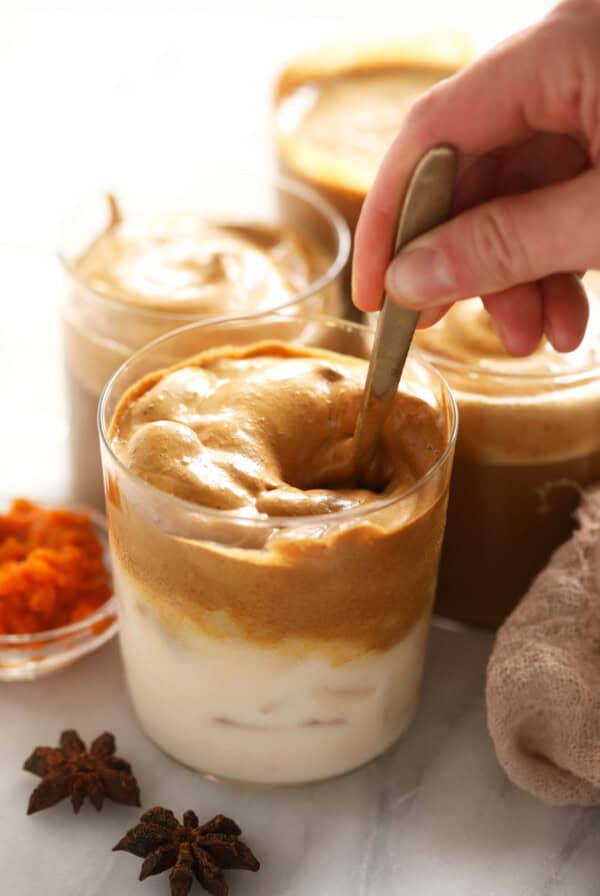

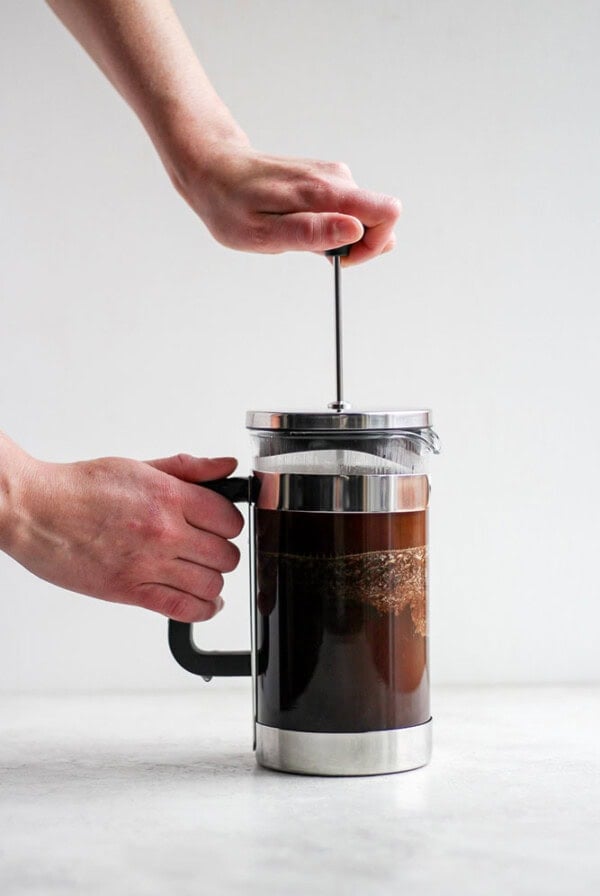
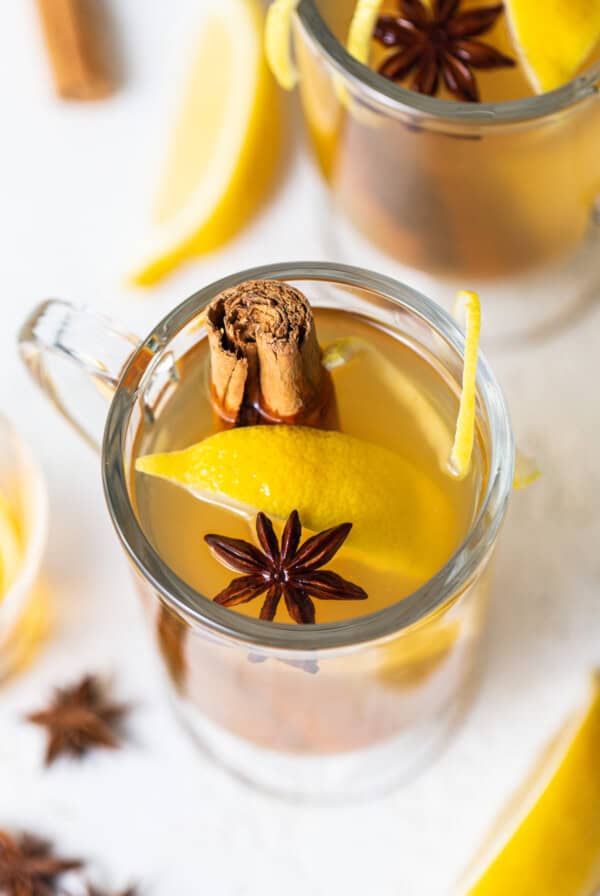







Pour over coffee is a meticulous and artisanal brewing method that elevates the coffee-making experience. The manual pour, emphasizing control over factors like water temperature and extraction time, produces a rich and nuanced flavor profile. It’s not just brewing; it’s a journey into the world of exceptional coffee craftsmanship, offering a hands-on and immersive experience for both seasoned connoisseurs and casual drinkers alike.